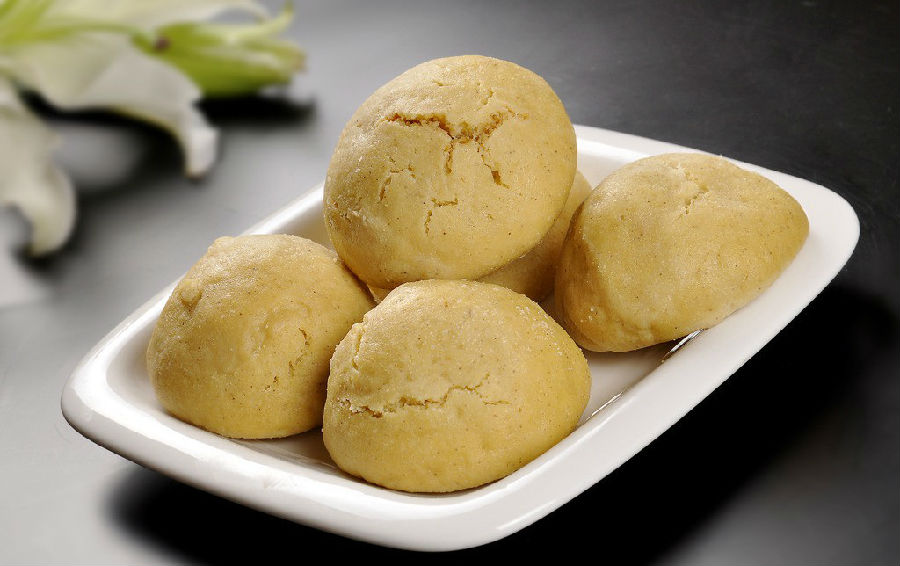Suide is rich in the glutinous millet resources.
綏德盛產糜子。
The yellow steamed buns are made with this main ingredient.
黃饃饃就是用糜子面做的饅頭。
Due to its drought-enduring nature, glutinous millet became the most important crop on the loess plateau.
糜子又叫黍,因為耐旱成為黃土高原最主要的農作物。
It was planted along the Yellow River regions more than 8,000 years ago.
8000多年前黃河流域就開始種糜子。
If the glutinous millet is directly steamed, it doesn't taste good enough.
糜子蒸煮成飯,口感略差。
But it used to be the most popular staple food for people in Northern Shaanxi.
但是這個本土食物在過去是陜北人最家常的主食。
There are two types of glutinous millets, the hard and the soft.
糜子分軟硬兩種老黃將硬糜子與軟糜子
Huang Guosheng mingles the two based on this proportion.
黃國盛按比例混合。

70% hard glutinous millets and 30% the soft kind, dip them in water over a night and then grind them up on a millstone.
按七比三的比例混合清水浸泡一夜之后上碾。
He would then use a sieve to get rid of the rough grains.
還要再細細地篩一遍才能使用。
Huang firmly believes that the glutinous millet powdered by a machine lags far behind those ground up on his millstone.
但是老黃堅定地認為用機器磨出來的糜子遠遠不如在自家石碾子上碾出來的好吃。
Fried glutinous millet produces natural fragrance.
炒過的糜子會散發出自然的清香。
It's a recipe that Huang feels most proud of.
這是老黃最引以為驕傲的制作秘方。
After kneading the glutinous millet flour, Huang would put it in a big jar for fermentation for a night.
揉完的糜子面要在缸里發酵一夜。
Experience taught Huang to wrap up the jars with quilts to make the buns tastier.
經驗告訴老黃,包上被子效果最好。
Huang's home, a cave house, is the most traditional dwelling format on the loess plateau in China.
老黃把家安在窯洞里,這種中國黃土高原最古老的居住形式。
It has a history of over 4,000 years.
可以追溯到4000多年前。
For the hardworking farmers here, their basic wish is to renovate a cave into a home and marry a wife.
一位農民辛勤勞作一生最基本的愿望就是修建幾孔窯洞有了窯,娶了妻。
That's how a life gets complete.
才算成家立業。











